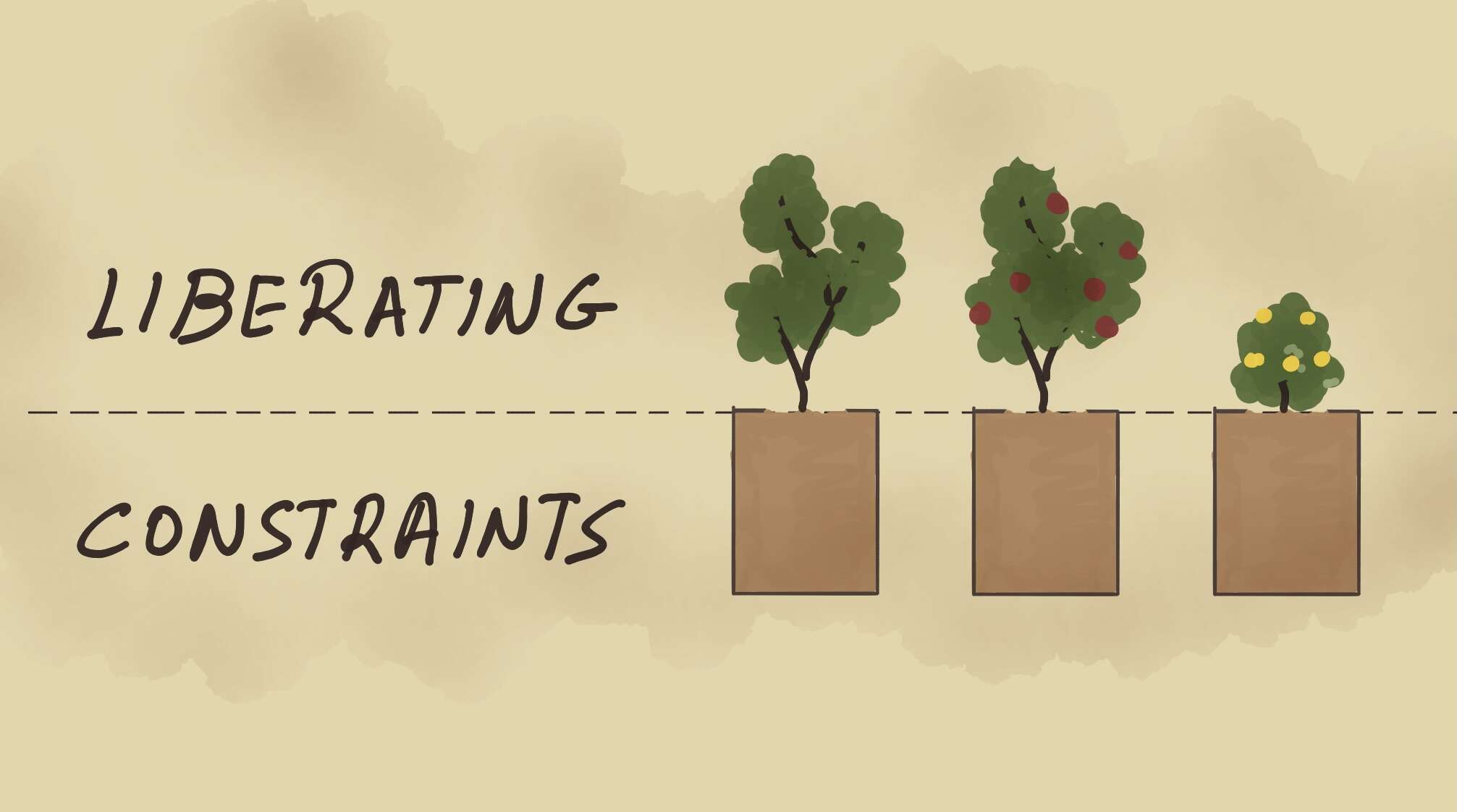Ever found yourself caught up in a chain of meaningless bureaucracy at work? I am sure you are, we’ve all been there. For example:
“Update that progress report nobody ever reads.”
“Request a small budget to get your team on a bonding activity, only to get stuck at a financial approval chain that takes weeks or months to get green lit.”
“You work with a proxy manager acting as a bridge, transferring information above and below in a corporal pyramid, probably getting the credit of your hard work.”
We all have personal stories to share of meaningless, wasteful procedures set in place just to make us more slow, kill productivity and demotivate us along the way.
But it doesn’t have to be that way.
The idea of Liberating constraints builds upon one simple rule:
The minimum boundaries we can set to safeguard business success, in favor of team autonomy, personal creativity and trust.
Many companies tend to add more and more horizontal processes, rules and structures, thinking they can control and monitor the work, the people, the performance. But we are not robots. Machines cannot innovate and move the needle forward, surprise us with new products and exciting new experiences. For a seed to grow and become a full grown plant, you need to have only three ingredients: Space in the soil, light and water. And then, you let nature do the miracle.
Amazing teams work the same way. Seed a team an idea, set a direction. Give them the resources they need, set some boundaries (e.g. time) and let them grow it into something wonderful.
So, how can managers implement Liberating constraints on their teams or companies? By observing how teams or the company as a whole works, identifying wasteful procedures and hammering them down, treating people as the adults they are, fueling what really matters to get the job done.
And here are some examples of this thought process:
“I trust you being flexible in the way you manage your time at work (liberating), but I expect you to show me the progress of your work every week (constraint).”
“Your team may use any tool to manage the delivery of a project, [e.g. Jira, Trello, Asana, a whiteboard] (liberating), as long as we can measure the adoption and success of the feature after release (constraint).”
So next time you or your manager introduces yet another process, challenge that decision. Is it a liberating process or more unhappy faces at work?
—-
Nikos Vasileiou
Head of Engineering @ Transifex
